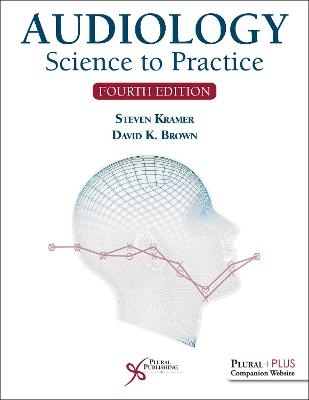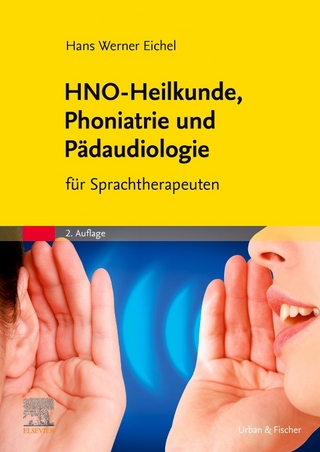
Audiology
Plural Publishing Inc (Verlag)
978-1-63550-346-3 (ISBN)
With two new chapters, improved artwork, and significant updates made throughout to increase readability, the fourth edition of Audiology: Science to Practice continues to be the most comprehensive textbook for audiology and hearing science courses, as well as for health care professionals wanting a better understanding of hearing science and audiology practices. It is written in a style that makes new or difficult concepts relatively easy to understand, while still providing more coverage of hearing and vestibular science and clinical audiology than other introductory texts.
Topics include information about the profession of audiology, acoustics, anatomy and physiology of the auditory and vestibular systems, preparing for the patient, otoscopy, pure-tone audiometry and speech measures, audiogram interpretations, masking, tympanometry, acoustic reflexes, wideband acoustic immittance, otoacoustic emissions, auditory brainstem responses, hearing screening, hearing aids, assistive listening aides, cochlear and other implantable devices, vestibular evaluation, descriptions of auditory and vestibular disorders, and aural rehabilitation. There is also a chapter on the roles of speech-language pathologists related to understanding and caring for persons with hearing and balance concerns. Where relevant, the material includes evidence-based practice.
New to the Fourth Edition
Two new chapters: Role of the Speech-Language Pathologist and Other Treatments and (Re)habilitation of Hearing and Balance Disorders
Many new beautifully drawn two-color anatomy and physiology illustrations
Black and white figures have been color-enhanced
Several chapters were reorganized and updated to include vestibular anatomy, physiology, and vestibular disorders within the relevant auditory chapters
A separate chapter on vestibular evaluation and bedside screening
Many chapters expanded to provide information on environmental factors that affect the transmission of sound, signal-to-noise ratio, preparation for testing, cerumen management, assistive listening technology systems (HATS), and status of over-the-counter hearing aids
Updated references and standards throughout
Key Features
Many illustrations than other texts to help clarify and expand on key concepts
Chapters begin with a list of learning objectives and end with key references
Punctuated with historical and informational side boxes
An easy-to-read writing style to help students understand scientific concepts
Key terms highlighted throughout with a comprehensive end-of-book glossary
A PluralPlus companion website with PowerPoint lecture slides and an image bank for instructors, James Jerger's chapter on the History of Audiology, and more
The authors have also created a companion study aid for students, Audiology Workbook, Fourth Edition.
Steven Kramer, PhD>, is Professor in the School of Speech, Language, and Hearing Sciences at San Diego State University, where he has been a faculty member and administrator since 1985. He served as the department chair from 1990 to 2001 and as the Codirector of the Audiology Doctoral (AuD) Program, offered jointly by San Diego State University (SDSU) and the University California San Diego (UCSD), from 2003 to 2016. He obtained his master's and doctoral degrees in audiology and hearing science from the University of Florida. He was a licensed and certified audiologist for about 40 years. Before his appointment at SDSU, he was a clinical faculty member at the University of Texas Medical Branch in Galveston, Texas. He has taught a wide array of courses at the graduate and undergraduate levels, including hearing science, diagnostics, medical audiology, evoked potentials, and psychoacoustics.+++++++++++++++++++++++++++++++++++++++++++++++++++++++++++++++++++++++++++++++++++David K. Brown, PhD, has been Professor in the School of Audiology at Pacific University since it enrolled its first students in 2012. He is also the Director of the Audiology Simulation Lab (SIMLab) at Pacific. Previously, he was Director of Audiological Research for Cincinnati Children's Hospital Medical Center and Assistant Professor in the Departments of Otolaryngology and Communication Sciences and Disorders, where he is still an adjunct professor. For over 30 years, he has been a licensed and certified audiologist specializing in pediatrics. He teaches in the areas of acoustics, anatomy and physiology, cochlear implants, evoked potentials, otoacoustic emissions, pediatrics, and research fundamentals.
Preface
Contributors
PART I. Perspectives on the Profession of Audiology
Chapter 1. The Discipline of Audiology
Professional Organizations in the United States
Development of the Profession of Audiology
References
Chapter 2. Audiology as a Career
Education and Professional Credentials in the United States
What Do Audiologists Do?
Membership Demographics in the United States and Work Settings
References
PART II. Fundamentals of Hearing and Balance Science
Chapter 3. Properties of Sound and Speech Acoustics
Simple Vibrations and Sound Transmission
Frequency
Wavelength
Other Factors That Affect Sound Propagation
Phase
Amplitude
Intensity and Pressure
Decibels
Inverse Square Law
Audibility by Frequency
Complex Sounds
Signal-to-Noise Ratio
Resonance
Acoustics of Speech
Filtering
Psychoacoustics
References
Chapter 4. Anatomy of the Auditory and Vestibular Systems
Overview and General Orientation
Outer Ear
Middle Ear
Inner Ear
Neural Pathways
References
Chapter 5. Functions of the Auditory and Vestibular Systems
Air-to-fluid Impedance Mismatch
Outer Ear
Middle Ear
Inner Ear (Cochlea)
Cochlear Nerve
Summary of the Auditory Transduction Process
Tuning Curves
Frequency Coding
Intensity Coding
Vestibular System
References
PART III. Evaluation of the Auditory and Vestibular Systems
Chapter 6. Preparation for Testing and Pure-tone Audiometry
Preparation for Testing
Case History
Otoscopy
Pure-tone Audiometry
Test Environment
Audiometers
Transducers
Air Conduction Versus Bone Conduction Testing
Obtaining Pure-tone Thresholds
Variables Influencing Thresholds
Variations with Young Children or Difficult-to-test Populations
References
Chapter 7. Audiogram Interpretation
Audiogram
Describing Audiograms
Other Audiogram Situations to Consider
Pure Tone Average
Decibel Sensation Level
References
Chapter 8. Speech Audiometry
Speech Testing Equipment and Calibration
Speech Threshold Measures
Word Recognition Score
Interpreting Word Recognition Scores
Speech-in-Noise Tests
Variations with Young Children or Difficult-to-test Populations
References
Chapter 9. Masking for Pure-tone and Speech Audiometry
Interaural Attenuation
Maskers
Making Decisions on When to Mask
How to Mask for Air Conduction Pure-tone Thresholds (Plateau Method)
How to Mask for Bone Conduction Pure-tone Thresholds (Plateau Method)
Summary of Pure Tone Masking Steps
Masking Examples for Pure-Tone Thresholds
Masking for Speech Audiometry
References
Chapter 10. Immittance
Immittance Concepts
Tympanometry
Wideband Acoustic Immittance
Acoustic Reflex Threshold
Acoustic Reflex Decay
References
Chapter 11. Auditory Evoked Physiologic Responses
Otoacoustic Emissions
Auditory Brainstem Responses
Auditory Steady State Responses
References
Chapter 12. Screening for Hearing Loss
Historical and Current Practice Guidelines
Infant Hearing Identification Programs
School Age Children
Adults
Screening Outcomes and Efficacy
References
Chapter 13. Vestibular Evaluation and Screening
Nystagmus
Basic Test Battery
Other Vestibular Tests
Office/Bedside Screening
References
Chapter 14. Disorders of Hearing and Balance
Describing Hearing Disorders
Outer Ear
Middle Ear
Inner Ear (Cochlear) Acquired
Auditory Nerve
Central Auditory Nervous System
Nonorganic (Functional) Hearing Loss
Tinnitus
Vestibular System
References
PART IV. Treatment/Management of Hearing Problems
Chapter 15. Hearing Aids
H. Gustav Mueller
Hearing Aid Dispensing
Workflow for the Selection and Fitting of Hearing Aids
Assessment of Hearing Aid Candidacy-Step 1
Treatment Planning-Step 2
Selection and Fitting of Hearing Aids-Step 3
Basic Hearing Aid Styles
Hearing Aid Programming
Verification-Step 4
Orientation-Step 5
Validation-Step 6
Hearing Assistive Technology
References
Chapter 16. Implantable Devices
Bone-anchored Implant
Middle Ear Implant
Cochlear Implant
Auditory Brainstem Implant
References
Chapter 17. Other Treatments and (Re)habilitation
Cerumen Management
Tinnitus
Aural (Re)habilitation
References
Chapter 18. Role of the Speech-Language Pathologist
Collaboration
Counseling
Prevention and Wellness
Screening
Assessment
Treatment
Modalities, Technology, and Instrumentation
Population and Systems
References
Glossary
Index
| Erscheinungsdatum | 01.11.2021 |
|---|---|
| Zusatzinfo | 236 figures and 40 tables |
| Verlagsort | San Diego |
| Sprache | englisch |
| Maße | 216 x 279 mm |
| Themenwelt | Medizin / Pharmazie ► Gesundheitsfachberufe ► Logopädie |
| Medizin / Pharmazie ► Medizinische Fachgebiete ► HNO-Heilkunde | |
| ISBN-10 | 1-63550-346-9 / 1635503469 |
| ISBN-13 | 978-1-63550-346-3 / 9781635503463 |
| Zustand | Neuware |
| Haben Sie eine Frage zum Produkt? |
aus dem Bereich


